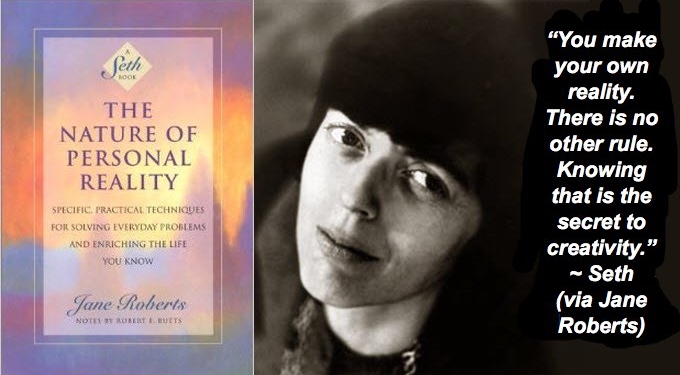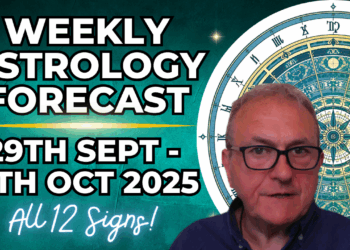
By Joseph A. Webb
Art is an apt metaphor for life, as I’ve come to learn. A painter creates an environment on canvass, imbuing it with his or her own unique tone. Likewise, each individual creates a unique life experience reflective of inner portions of the self—regardless of whether the person thinks of him- or herself as a creator.
Many people don’t see their intimate connection to external reality, of course; instead, they deal with circumstances as if they had happened haphazardly. That mainstream understanding is the equivalent of a painter splashing random colors on the canvass and then pretending not to understand how they got there.
Although I had been taught as a child to supplicate to a God who would help me, I nevertheless also had a mainstream view of daily reality. I could largely only react to events, according to my thinking. Eventually, synchronistic events that did not seem coincidental, coupled later with lingering doubt about an external God, caused me to question much of what I had been taught. Being driven to understand, I went through an intense period of reflection and increasing confusion.
Through a fortunate “accident,” I discovered the book The Nature of Personal Reality, one book of the Seth material written by Jane Roberts. Many of you have probably heard about the Seth material; written and recorded from the 1960s to 1980s, the channeled collection of books and audios established itself in a major way in public consciousness. It remains powerful and is the most in-depth material of any kind that I’ve read or heard. The following passage from The Nature of Personal Reality first hooked me:
“Experience is a product of the mind, the spirit, conscious thoughts and feelings, and unconscious thoughts and feelings. These together form the reality that you know. You are hardly at the mercy of a reality, therefore, that exists apart from yourself or that is thrust upon you. You are so intimately connected with physical events composing your life experience that often you cannot distinguish between the seemingly material occurrences and the thoughts, expectations, and desires that gave them birth.”[1]
There was more:
“You make your own reality. There is no other rule. Knowing that is the secret to creativity.”[2]
The philosophy resonated deeply within me; with every chapter in the book I answered questions I had been unable to before. The weight of confusion lifted from my shoulders, and generalized fear slowly melted away. I no longer felt I had to protect myself from randomness. With euphoria, I ventured forth, primed to create realities for myself that I had always wanted, knowing that I was connected to the outcome. When the company I worked for went out of business, I started my own business, which I would otherwise not have due to fear. I had more confidence about creating a close relationship that had eluded me, and after some delay I found myself in one.
Being exhilarated by a sense of purpose and optimism is wonderful, and it leads to positive outcomes. Yet complications usually arise, as fear is rarely completely eradicated and therefore manifests itself in reality in some way. Even accomplished painters don’t near-effortlessly produce art that immediately aligns with their vision. Rather, the task involves one or more preliminary sketches, fits and starts, adjustments, and fixes when the paint doesn’t quite look right. Sometimes the painter alters his or her vision during the painting process. Creating a desired reality resembles that. When fear lessens because of changed limiting beliefs, that’s an important step—but just a first step.
In time, my relationship had grown increasingly difficult until I ended it, and my work had become less enjoyable, followed by a dwindling of clients. Later, I took a part-time job that became full time, and thereafter I only occasionally worked for myself. Although I remained convinced that my Seth-inspired worldview was basically correct, I nevertheless was not as bold and confident in my outlook. I lost my direction.
Reality constantly reveals what our beliefs are. Although relinquishing one set of limiting beliefs can lead to a desired reality, it could also to lead to elements of dissatisfaction that emanate from another set of limiting beliefs. In my case, after my initial foray into working for myself, I dreaded any feedback or criticism that implied my work was subpar, even when I had no reason to expect it. That indicated a lack of belief in my professional worth. Similarly, doubts over self-worth had partly led to a frustrating relationship.
Over time, I made progress with those beliefs and feelings. Simply recognizing them can often dispel them.
Given that limiting beliefs and emotions are usually sprinkled among positive beliefs, how can someone know whether he or she has changed enough to create a satisfying reality? A key point Seth made about emotions supplies part of the answer: negative emotions resulting from an unpleasant incident come from underlying beliefs that existed before the incident and are a cause of it.
Bashar, another channeled entity, elaborated on that point. In a YouTube video I watched about a year ago, which has since been taken down, Bashar brought light to the lag between experiences and the inner state that creates them. What I experience today might be related to my inner state a few days or weeks before. If the experience is “negative” but my thinking or beliefs have changed for the better during the interim, then I won’t feel hurt or disappointed over the outcome. So I will then know I’m on the road to creating what I want.
Bashar’s idea stuck with me, and I noted how “negative” circumstances triggered less hurt, anger, or disappointment or prompted no negative emotions at all. I knew I needn’t become anxious about not yet experiencing what I want—and such worry could delay the desired reality even more. That knowledge is another important tool for the painter’s toolkit.
For more on the Seth material, see https://www.youtube.com/watch?v=cdV7w78fk0g and https://www.youtube.com/watch?v=ldLDQ9z-zVM. For more on Bashar, see https://www.youtube.com/watch?v=wCZ1Lib1_cQ.
[1] Jane Roberts, The Nature of Personal Reality (Englewood Cliffs: Prentice-Hall, 1974), xviii-xix.
[2] Ibid., 16.
About the Author
Joseph Webb is a freelance writer and editor. He can be reached at josephwebb@earthlink.net.
















I read “The Seth Material”, every volume I could get my hands on, back in the late 1980’s. I loved every minute of my reading. Jane Robert’s work was the first such reading I’d encontered in the genre and I have never forgotten the most compelling lessons Seth was willing to teach. I recommend her books to anyone and everyone who has an interest.
Thank God (ourselves) for all the good channeled material at this time. And we are getting this learning from Spirit because we need it and are able to handle it at this point of our evolution. My thought is that those reading it now are the students who will be the teachers in the future.